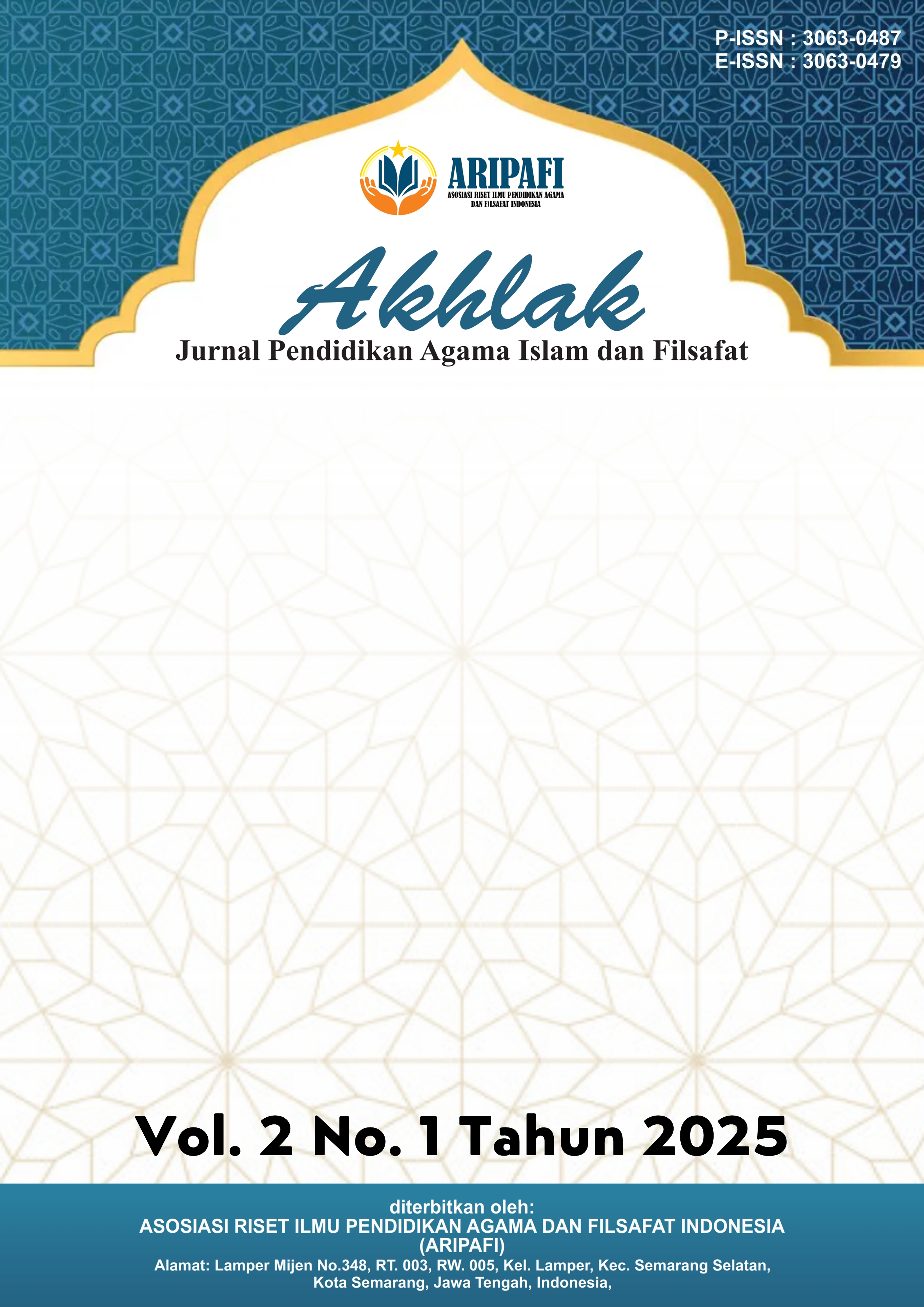Mengupas Ragam Bentuk Penafsiran Al-Qur’an
DOI:
https://doi.org/10.61132/akhlak.v2i1.392Keywords:
Tafsir, bil al matsur, bi al ra'yi, isyariAbstract
Interpretation of the Qur'an is an effort to understand Allah's verses through various methods, including tafsir bil-ma'tsur, tafsir bil-ra'yi, and tafsir Isyari. Tafsir bil-ma'tsur relies on the Qur'an, hadith, and the understanding of the companions and the tabi'in, carrying strong authority but not without critique regarding the authenticity of its chains of narration and the potential inclusion of Israiliyat. Tafsir bil-ra'yi employs reason and logic, divided into commendable interpretations that adhere to the principles of Quranic exegesis and blameworthy interpretations that often deviate from Islamic law. Meanwhile, tafsir Isyari offers a symbolic and esoteric approach, requiring strict conditions to ensure relevance and alignment with the apparent meaning of the verses. Although scholars have differing opinions regarding the validity of these interpretative methods, they collectively reflect the intellectual richness of Islam in interpreting the Qur'an to meet the spiritual and intellectual needs of the community across different contexts and eras.
References
Achmadin, B. Z., Fattah, A., Asrori, M., & Mukhsin, A. (2024). Model of tafsir bi al-ma’tsur approach relevance to islamic education: a chronological review of qur’anic interpretation. At-Turats Journal Is a Journal of Islamic Education, 18(4), 54–73.
Akhyar, M., Batubara, J., & Deliani, N. (2024). The central role of the Quran in the development of the Islamic educational paradigm. FOKUS Jurnal Kajian Keislaman Dan Kemasyarakatan, 9(1), 25–38.
Akhyar, M., Remiswal, R., & Khadijah, K. (2024). Pelaksanaan Evaluasi P5 dalam Meningkatkan Kreativitas dan Kemandirian Siswa pada Mata Pelajaran PAI di SMPN 1 VII Koto Sungai Sariak. Instructional Development Journal, 7(2).
Akhyar, M., & Samad, D. (2024). STUDI ANALISIS TAFSIR AL-QUR’AN DAN RELEVANSINYA DALAM PENDIDIKAN ISLAM. INOVATIF: Jurnal Penelitian Pendidikan, Agama, Dan Kebudayaan, 10(1), 38–57.
Arif, M. S. (2021). TAFSIR BI AL-ISYARAH. ’Aainul Haq: Jurnal Hukum Keluarga Islam, 1(II).
Arsad, M. (2018). PENDEKATAN DALAM TAFSIR (Tafsir Bi Al Matsur, Tafsir Bi Al Rayi, Tafsir Bi Al Isyari). Yurisprudentia: Jurnal Hukum Ekonomi, 4(2), 147–165.
Baihaqi, N. N. (2022). KARAKTERISTIK TAFSIR RUH AL-MA’ANI. Al Muhafidz: Jurnal Ilmu Al-Qur’an Dan Tafsir, 2(2), 115–130.
Firdaus, M. Y., Malik, N. H. A., Salsabila, H., Zulaiha, E., & Yunus, B. M. (2023). Diskursus Tafsir bi al-Ma’tsur. Jurnal Dirosah Islamiyah, 5(1), 71–77.
Maulana, M. (2020). Perkembangan Tafsir Timur Tengah Zaman Nabi Sampai Kontemporer. JURNAL ILMIAH FALSAFAH: Jurnal Kajian Filsafat, Teologi Dan Humaniora, 6(2), 118–138.
Nurman, M. (2023). Legalitas Tafsir Isyari dalam Penafsiran Al-Quran. ISME: Journal of Islamic Studies and Multidisciplinary Research, 1(1), 1–6.
Supratman, J. (2014). Pendekatan penanfisran al-Qur’an yang didasarkan pada instrumen riwayat, nalar, dan isyarat batin. Intizar, 20(1), 43–62.
Ushama, T., & Basri, H. (2000). Metodologi Tafsir Al-Quran: Kajian Kritis Objektif dan Komprehensif.
Wahid, A. (2010). Tafsir Isyari dalam Pandangan Imam Ghazali. Jurnal Ushuluddin, 16(2), 123–135.






